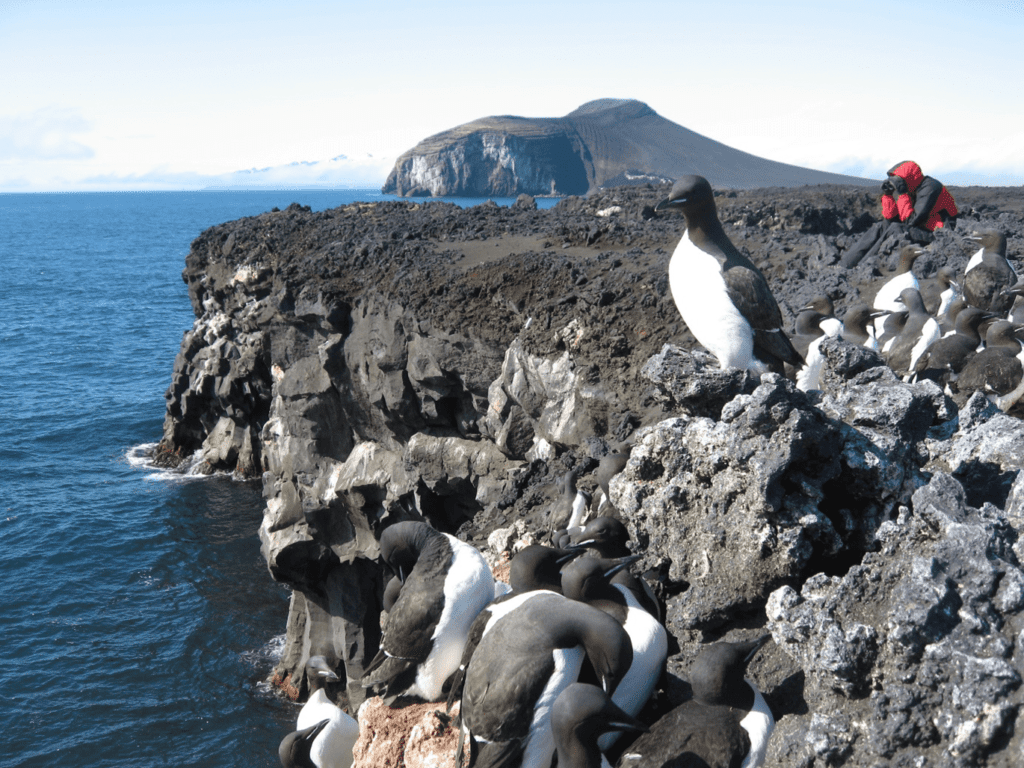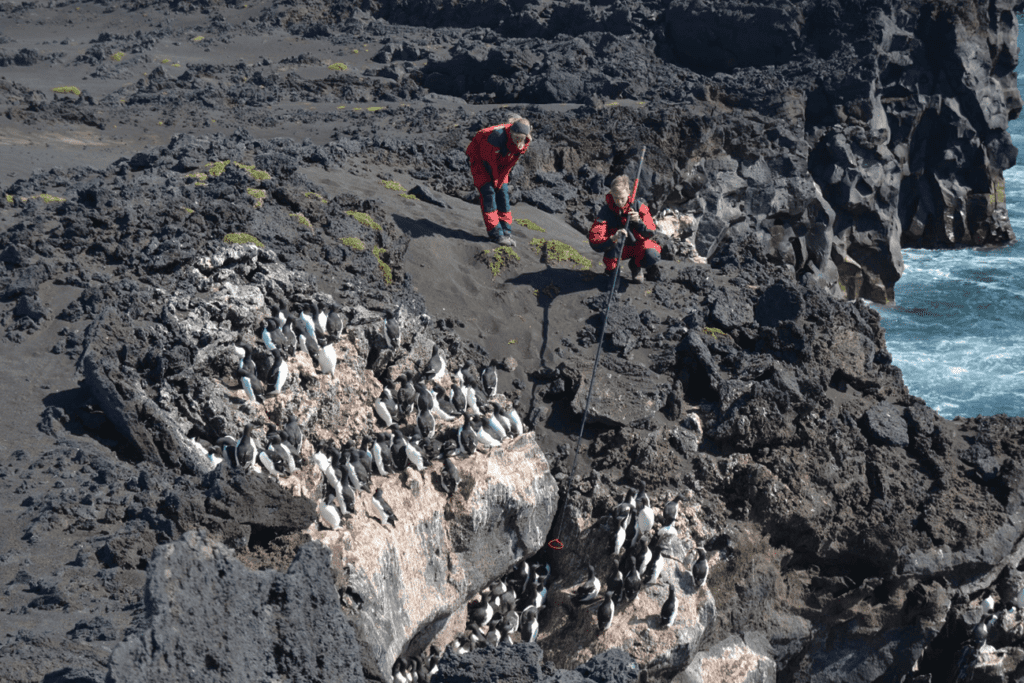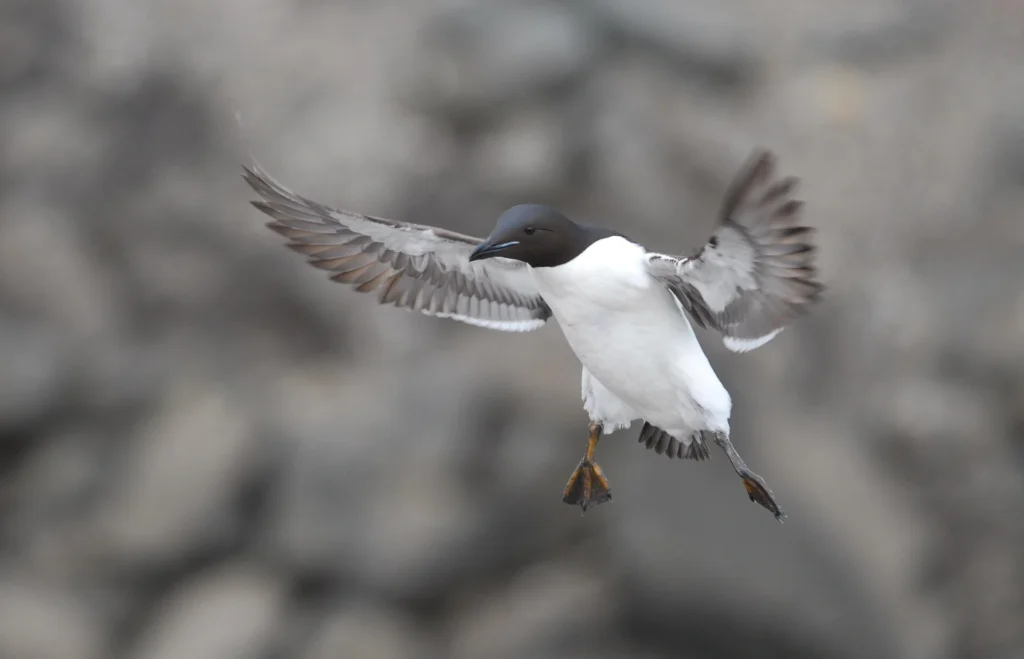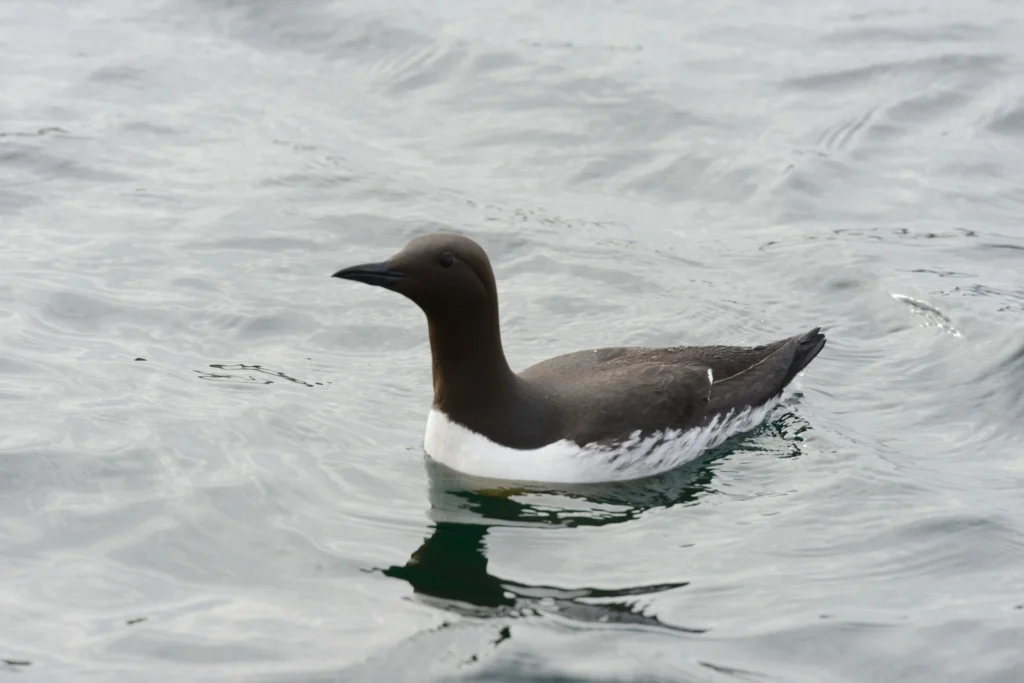Jan Mayen (70,921°N x 8,718°W) is a mountainous, 373 km² volcanic island midway between Iceland and Spitsbergen. Its highest summit, Beerenberg, rises 2277 m above sea level and is partially covered by a glacier.

Jan Mayen is protected as a nature reserve (2010) and is home to a large number of seabirds of various species, the most numerous being Northern Fulmars, Brünnich’s guillemots and Little auks. The largest seabird colonies are found on the northeastern part of the island. Among other breeding seabird species are kittiwakes, glaucous gulls, great skuas, great black-backed gulls, herring gulls and eiders. Seabird colonies in Jan Mayen were mapped in 2010, and annual monitoring under the banner of SEAPOP was initiated in 2011. GLS loggers have been deployed on guillemots breeding on Jan Mayen since 2012.

That work was incorporated into SEATRACK in 2013, and in 2014, we also started deploying loggers on fulmars.
The areas accessible for effective work on seabirds are on the central part of Jan Mayen.
Guillemots are captured at Skrinnodden on the southern coast. This area is relatively young in geological terms, and the birds breed in small, scattered colonies along the black, ragged cliffs. Wind erodes the area, and drifting sand can change the features of the ledges from one year to the next.

Seatrack partner

Hallvard Strøm
Norwegian Polar Institute
Data availability







